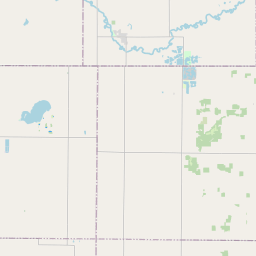Henry Romain Pattengill
Historical marker location:
171 West Center Street, Ithaca, Michigan
( Marker is on West Center Street near North Maple Street, on the right when traveling west.)
Marker installed: 1924







© OpenStreetMap contributors
1852-1918
Loading...
Searching for other points of interest within 10 miles of this location.The first known use of the word "Yooper" to refer to someone from the Upper Peninsula of Michigan was in the 1970s. The term has since become a popular nickname for residents of the UP.
About Gratiot County
Gratiot County Timeline
Gratiot County, located in central Michigan, has a rich history that spans several centuries. The area was originally inhabited by various Native American tribes, including the Ojibwa, Ottawa, and Potawatomi. European settlement began in the early 19th century when fur traders and pioneers ventured into the region. In 1831, Gratiot County was officially established and named after Captain Charles Gratiot, an American soldier of French descent.
The economy of Gratiot County initially revolved around the fur trade and agriculture. The arrival of the railroad in the mid-19th century brought more opportunities for growth and development. Several towns, including Ithaca and St. Louis, experienced significant expansion as a result. Agriculture became a vital industry, with farmers growing crops such as corn, wheat, and soybeans. Gratiot County also became known for its production of high-quality dairy products.
The 20th century brought further changes to Gratiot County. The automobile industry began to shape the local economy, with factories and manufacturing plants establishing a presence in the region. The county became an important part of the automotive supply chain, as well as a hub for related industries. Additionally, advancements in technology and infrastructure brought improvements to education, healthcare, and infrastructure within the county.
Today, Gratiot County continues to prosper, with a diverse economy that includes agriculture, manufacturing, healthcare, and education. The county is home to several institutions of higher learning, providing opportunities for residents to pursue higher education. Gratiot County also boasts natural beauty, including lakes, parks, and recreational areas, making it an attractive destination for outdoor enthusiasts. With a strong sense of community and a rich history, Gratiot County remains an important part of Michigan's heritage and economy.
The economy of Gratiot County initially revolved around the fur trade and agriculture. The arrival of the railroad in the mid-19th century brought more opportunities for growth and development. Several towns, including Ithaca and St. Louis, experienced significant expansion as a result. Agriculture became a vital industry, with farmers growing crops such as corn, wheat, and soybeans. Gratiot County also became known for its production of high-quality dairy products.
The 20th century brought further changes to Gratiot County. The automobile industry began to shape the local economy, with factories and manufacturing plants establishing a presence in the region. The county became an important part of the automotive supply chain, as well as a hub for related industries. Additionally, advancements in technology and infrastructure brought improvements to education, healthcare, and infrastructure within the county.
Today, Gratiot County continues to prosper, with a diverse economy that includes agriculture, manufacturing, healthcare, and education. The county is home to several institutions of higher learning, providing opportunities for residents to pursue higher education. Gratiot County also boasts natural beauty, including lakes, parks, and recreational areas, making it an attractive destination for outdoor enthusiasts. With a strong sense of community and a rich history, Gratiot County remains an important part of Michigan's heritage and economy.
Gratiot County Timeline
This timeline provides a condensed summary of the historical journey of Gratiot County, Michigan.
- 1820: Gratiot County is established as a county in the state of Michigan.
- 1855: The village of Ithaca, the county seat, is platted.
- 1867: The Detroit and Milwaukee Railroad reaches Ithaca, aiding in transportation and economic growth.
- 1873: The City of Alma is incorporated, becoming an important hub for the county.
- 1874: The Gratiot County Herald, the county's first newspaper, is published.
- 1880s: Agriculture, mainly corn and wheat farming, becomes the primary industry in the county.
- 1912: The Saginaw and Gratiot County Electric Railway opens, connecting Gratiot County with Saginaw and facilitating transportation.
- 1925: The Gratiot County Courthouse, a notable architectural landmark, is completed.
- 1930s: The Great Depression causes significant economic hardship, affecting the county's agricultural and industrial sectors.
- 1950s-1960s: The automobile industry grows in importance, with several automotive manufacturing facilities established in the county.
- 1974: Alma College, a private liberal arts college, hosts the first Alma Highland Festival and Games, an annual event celebrating Scottish heritage.
- 1980s: Manufacturing continues to be a major industry, but the county experiences a decline in population due to economic factors.
- 1990s-present: Gratiot County focuses on diversifying its economy, investing in renewable energy, healthcare, and education sectors.